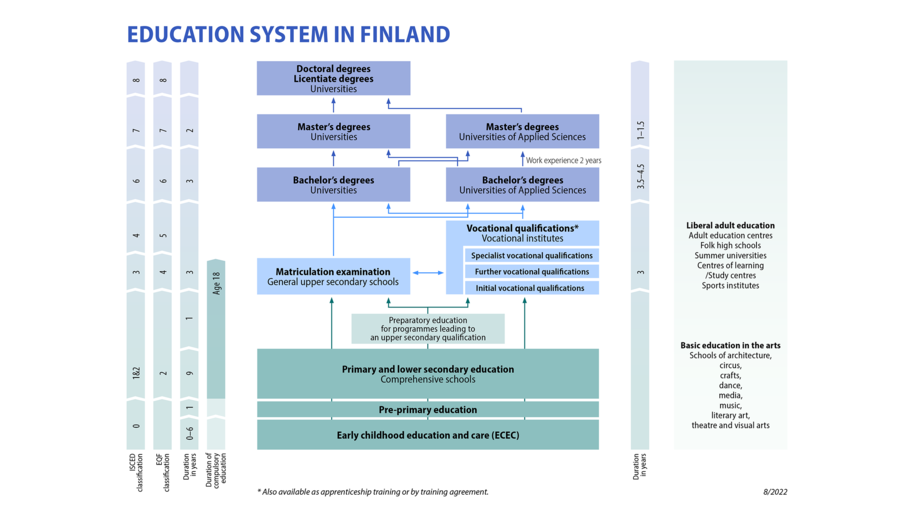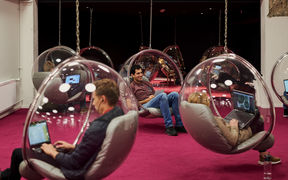Higher education in Finland
Higher education in Finland is provided by universities and universities of applied sciences (UAS). UASs offer bachelor’s and master’s studies. Universities offer also doctoral studies.
Universities and UASs offer professional specialisation programmes and non-degree studies as modules or stand-alone courses through open-university or open-UAS initiatives and through continuous education. These study formats are also planned to enable lifewide learning.
Higher education is tuition-free for Finnish, EU and EEA students, and it provides a scholarship system for students coming from outside these regions.
Higher Education in Finland | okm.fi
From a policy perspective, the aim of higher education institutions in Finland is to reach a high international standard and to attend to local concerns at the same time, in addition to enjoying autonomy in teaching and research.
Higher education is seen as an instrument to build and enhance society, contributing to the creation of a skilled workforce and renewing the cultural and social spheres. Higher education is a vehicle for achieving social welfare and promoting equality, and institutions should therefore have admission systems and programmes designed to include youth and immigrants.
As science education is meant to advance the competence level of citizens, higher education institutions must work with other stakeholders in society to make scientific knowledge visible.
Science policy aims to make science in Finland internationally competitive, improve science’s infrastructure in the country and protect the openness of science and research.
Policy and Development in Higher Education and Science | okm.fi










